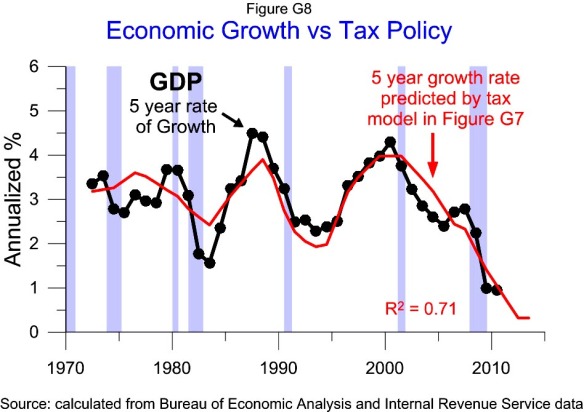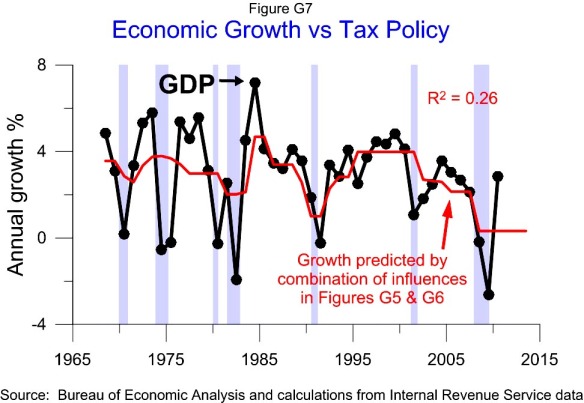 The capital gains tax rate has a curvilinear relationship with the unemployment rate. The strongest correlation is with the capital gains rate leading by 6 years. The capital gains rate that minimizes unemployment appears to be about 24.7%, but any rate between 21% and 29% would help keep the unemployment rate low.
The capital gains tax rate has a curvilinear relationship with the unemployment rate. The strongest correlation is with the capital gains rate leading by 6 years. The capital gains rate that minimizes unemployment appears to be about 24.7%, but any rate between 21% and 29% would help keep the unemployment rate low.
The capital gains tax rate was raised to 39.9% in 1976 six years later the unemployment rate averaged 9.5% in 1982. The capital gains tax rate was cut to 15% in 2003 six year later unemployment averaged 9.3% in 2009. The correlation suggests that a 15% capital gains tax rate is consistent with a 9.1% unemployment rate.
While the current measure of unemployment only goes back to 1948, the correlation suggests that the 12.5% capital gains tax rate in place from 1922 to 1933 would have led to a 12.6% unemployment rate from 1928 through 1939.
The influence of the capital gains tax rate is combined with the influence of the top bracket in Figure E3 to make the unemployment model in Figure E4.



